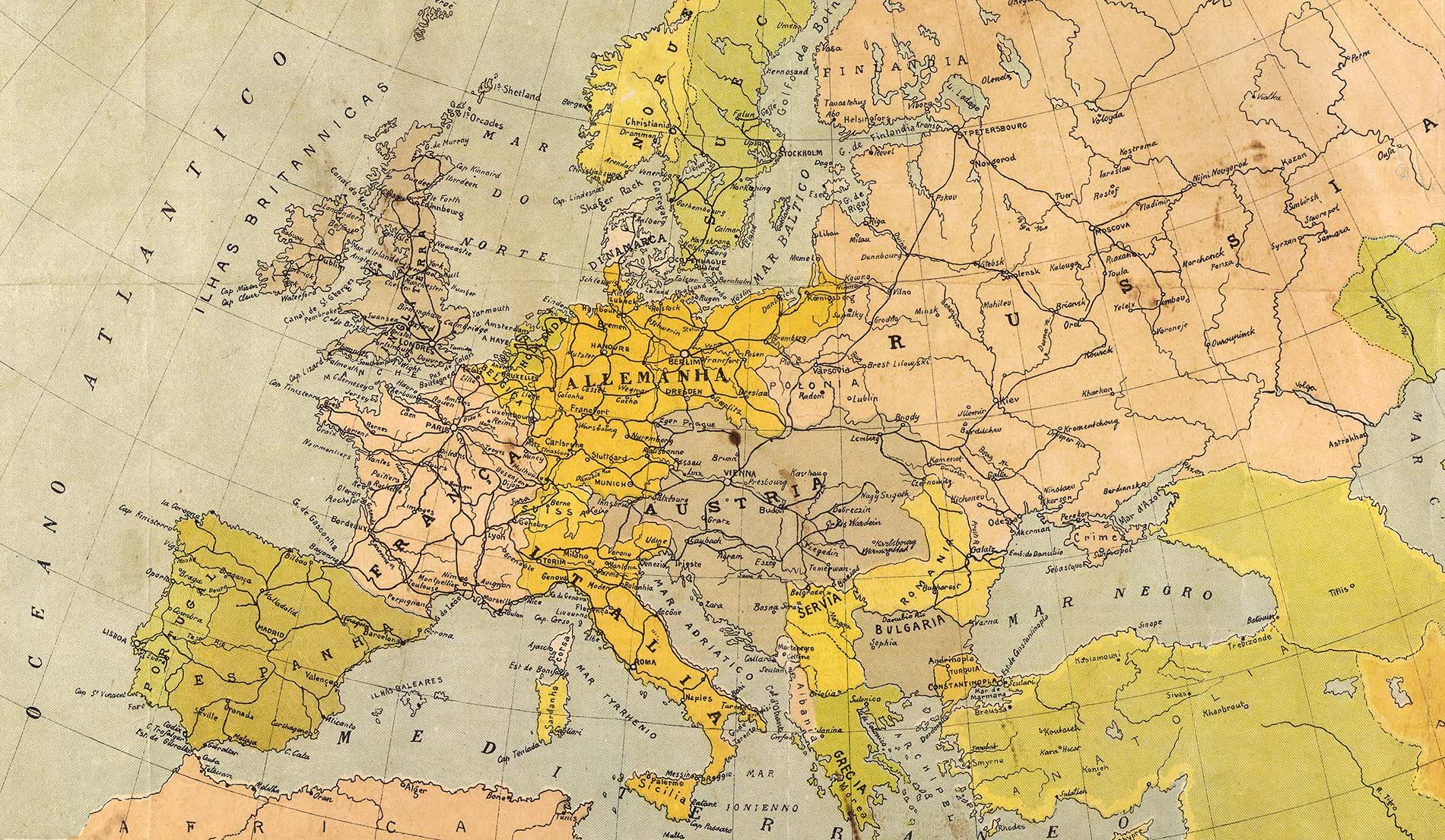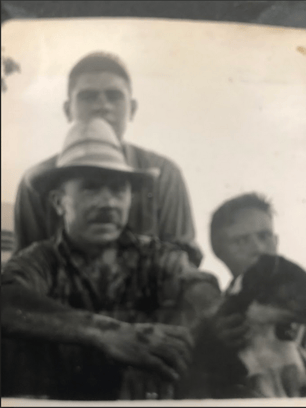
Geographic map of Europe in 1914, published in Brazil. Via Library of Congress.
So you’ve compiled the census returns, checked the church records, located the naturalization documents and ship manifests, and found the name of the town, region, or country in Europe where your 19th or 20th century immigrant ancestor originated. Congratulations! Now comes the hard part: figuring out where, in the constantly shifting landscape of legal and ethnic boundaries that made up Europe, your ancestor was actually from.

|
András Breitenbach (Hungarian??) and his sons in the 1930s |
Sometimes it can seem simple. For example, my great-great-grandfather András Breitenbach consistently identified his birthplace as Hungary on the U.S. census. He was a native speaker of the Magyar (Hungarian) language. The ship manifest showing his arrival in 1904 listed his nationality as Hungarian and his “race or people”—his ethnicity—as Magyar. On his petition for naturalization, he said he was born in Sima, Hungary, and relinquished his loyalty to the “Present Government of Hungary.”
All very straightforward—András was Hungarian! Except for one problem: the modern nation of Hungary didn’t exist with its current borders until after World War II, 40 years after András’ departure. He was actually born in Austria-Hungary, an empire encompassing a vast territory and a huge number of ethnic and national groups. He started the process of renouncing his allegiance to the “Present Government of Hungary” in 1920, when that government still controlled parts of what are today Slovakia, Romania, Croatia, Austria, Ukraine, Serbia, and Slovenia. (By the end of 1920, those places were called Czechoslovakia, Yugoslavia, Transylvania, and Galicia. Confused yet?) And that’s not even getting into the Iron Curtain, though that happened after András’ time.
You may face a number of challenges while trying to locate your 19th- or early 20th-century ancestor’s place of origin in Central or Eastern Europe. As the Russian, German, and Austro-Hungarian Empires rose and fell during this period, borders moved and names changed with dizzying frequency. Each jurisdiction used different methods of organizing and keeping records. Further, all of these empires were multilingual—any given town or region could be referred to by a handful of names in German, Russian, Yiddish, and other local languages, which in turn could be spelled any number of ways when interpreted by an English-speaking clerk or customs agent. Even if you can pinpoint the exact plot of land where your ancestor was born, unraveling what that means in terms of their citizenship, culture, and national identity—and figuring out where to find their birth record—can be a complex and confusing project.
Many of the national identities we recognize today didn’t exist for our ancestors, or may have signified something else entirely. There are some nations, regions, and nationalities that no longer appear at all on modern maps—what if your ancestor was Silesian? Moravian? Prussian? For example, your ancestor might have been born in what is now Poland, spoken a Russian dialect, and identified themselves as an Austrian citizen, even though they were born hundreds of miles from the modern Austrian border.
So, why does this matter? Understanding what your ancestor meant when they said “Austria” (or Hesse, or Galicia, or Posen, or Grodno) can help you figure out where to look for their place of origin, especially when many towns and regions sound very similar. For example, if American records say your ancestor was born in “Wola,” you’ll have to determine if that means Wolyn (now Volhynia, Ukraine, then a region of the Russian Empire), Swieta Wola (now Svyataya Volya, Belarus, then in Minsk, Russia) or perhaps Wola Michowa (now in Poland, then in Galicia, Austria). Unraveling national identities and regions of imperial control can help you make that determination more easily.
You may be asking, does all of this still matter even when you’ve already identified an exact town of origin? After all, it seems like a lot of map-shuffling, when you can simply plug a town name into Google Maps and figure out where it is. However, establishing exactly where your ancestors were from at the time they were living there can help you understand their culture and their day-to-day lives. Plus, you will need to understand these distinctions and their history in order to find records. Learning a little about the Napoleonic Wars and the unification of Germany can help you understand how your ancestor could be born in Westphalia, get married in France, baptize their children in Prussia, and die in Germany without moving more than a mile.
Fortunately, there are many excellent tools that can help you unravel these border changes. Old Maps Online allows you to overlay historical maps on modern borders. For ancestors who lived in Prussia (now parts of Germany, Poland, Lithuania, and Russia), Kartenmeister is a Prussian gazetteer that allows you to search town names in a variety of languages. You can find more information about jurisdictions in the German Empire with the digital version of Meyer’s Gazetteer . For Jewish ancestors across Europe and the world, JewishGen is a treasure trove of information and resources. The JewishGen Communities Database will give you names of Jewish towns in different languages and tell you which country the town was belonged to before, during, and after the World Wars—this is especially helpful for places within the pre-1918 Russian Empire.
Good luck!
Further Learning
Free Lecture: Understanding Boundaries and Jurisdictions
Understanding where your ancestor is living at a given time can be a loaded question—to answer it completely, you need to know the broader geo-political and historical context. As records are most often arranged by place, the “where” becomes especially important for family historians. In this webinar, Genealogist Hallie Borstel demonstrates how to research boundary changes and understand jurisdictional levels using maps, primary and secondary sources, and other records.
More free lectures from American Ancestors:
Getting Started in Lithuanian Family History Research
Basics of Jewish American Genealogy
Getting Started in Polish Research